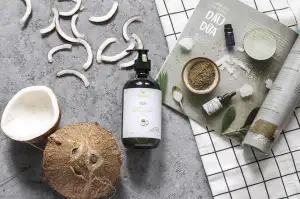Unveiling the Shelf Life of Almond Milk: Does Almond Milk Go Bad? Find Out the Spoilage Signs and Health Implications

Almond milk has gained popularity as a dairy-free alternative, loved for its creamy texture and nutty flavor. But like any perishable product, almond milk has a limited shelf life. As consumers, it is important to understand the factors that affect its freshness and how to identify signs of spoilage. In this article, we will delve into the shelf life of almond milk, explore the factors that influence its longevity, and provide tips on proper storage and handling to ensure you can enjoy fresh and safe almond milk every time.
Factors Affecting the Shelf Life of Almond Milk
Several factors can affect the shelf life of almond milk. One crucial factor is the packaging. Almond milk that comes in aseptic cartons has a longer shelf life compared to those in plastic bottles or containers. This is because aseptic cartons provide better protection against light, air, and bacteria.
Another factor is the temperature at which almond milk is stored. It is essential to keep almond milk refrigerated at all times. Higher temperatures can promote bacterial growth and spoilage, reducing its shelf life significantly.
The quality of the ingredients used also plays a role in determining how long almond milk will last. Fresh almonds and high-quality additives are less likely to cause spoilage compared to lower-quality ingredients.
Lastly, the presence of preservatives can extend the shelf life of almond milk. Some brands add preservatives like carrageenan or potassium sorbate to inhibit bacterial growth and prolong freshness.
By considering these factors, consumers can ensure they are purchasing almond milk with a longer shelf life and better quality.
How Long Does Almond Milk Last?
Almond milk, like any other perishable food item, has a limited shelf life. The exact duration depends on various factors such as the manufacturing process, packaging, and storage conditions. On average, unopened almond milk can last for about 7-10 days past the printed expiration date when stored in the refrigerator at or below 40°F (4°C). However, it is essential to note that this is just an estimate and not a guarantee of freshness. Once opened, almond milk should be consumed within 7-10 days to ensure optimal taste and quality. It is crucial to check the expiration date before purchasing almond milk and consume it within the recommended timeframe for the best experience.
Signs of Spoilage in Almond Milk
It is important to be able to identify the signs of spoilage in almond milk to ensure you are consuming a safe and fresh product. Here are some common indicators that your almond milk may have gone bad:
1. Foul odor: If your almond milk has a sour or unpleasant smell, it is likely spoiled. Fresh almond milk should have a mild, nutty aroma.
2. Curdling or separation: When almond milk starts to spoil, you may notice curdling or separation. The liquid may appear chunky or clumpy instead of smooth and creamy.
3. Change in color and texture: Spoiled almond milk can change in color, becoming darker or yellowish. It may also develop a slimy or grainy texture.
4. Off taste: If your almond milk tastes off, sour, or rancid, it is a clear sign that it has spoiled. Fresh almond milk should have a slightly sweet and nutty flavor.
If you observe any of these signs, it is best to discard the almond milk immediately to avoid any potential health risks associated with consuming spoiled products. Always prioritize safety when it comes to food consumption.
Proper Storage and Handling of Almond Milk
Proper storage and handling of almond milk is crucial to ensure its freshness and safety. Here are some tips to help you keep your almond milk in optimal condition:
1. Refrigeration: Almond milk should always be stored in the refrigerator, even if it is unopened. The cold temperature helps slow down the growth of bacteria and extends its shelf life.
2. Check the expiration date: Before purchasing almond milk, make sure to check the expiration date on the packaging. This will give you an idea of how long it will stay fresh.
3. Seal tightly: After opening a carton or bottle of almond milk, make sure to seal it tightly before placing it back in the refrigerator. This prevents air from entering and keeps the milk fresher for longer.
4. Avoid cross-contamination: To prevent any potential contamination, avoid using dirty utensils or cups when handling almond milk. Always use clean spoons or pour directly into a clean glass.
5. Do not leave it at room temperature: Almond milk should never be left at room temperature for an extended period. It is best to consume it chilled and return it to the refrigerator as soon as possible after use.
6. Avoid direct sunlight: Exposure to direct sunlight can degrade the quality of almond milk and affect its taste. Store it in a cool, dark place away from sunlight.
By following these storage and handling guidelines, you can enjoy fresh and safe almond milk for a longer period, ensuring that you savor every sip without any health concerns.
In conclusion, almond milk is a popular dairy alternative that offers numerous health benefits. However, it is important to understand its shelf life and signs of spoilage to ensure you are consuming fresh and safe almond milk.
By considering factors such as the production process, packaging, and storage conditions, you can extend the shelf life of almond milk. It is recommended to consume almond milk within 7-10 days after opening, although some brands may have a longer shelf life.
To ensure the freshness of your almond milk, always check for signs of spoilage such as an off smell, curdling or separation, or an unusual taste. If any of these signs are present, it is best to discard the almond milk to avoid any potential health risks.
Proper storage and handling also play a crucial role in maintaining the quality of almond milk. Always refrigerate it at temperatures below 40°F (4°C) and avoid exposing it to direct sunlight or extreme temperature fluctuations. Additionally, make sure to shake the container well before each use to prevent separation.
By following these guidelines, you can enjoy fresh and safe almond milk for a longer period. Remember to always prioritize your health and well-being by being mindful of the shelf life and signs of spoilage in your almond milk consumption.
Published: 26. 12. 2023
Category: Health



